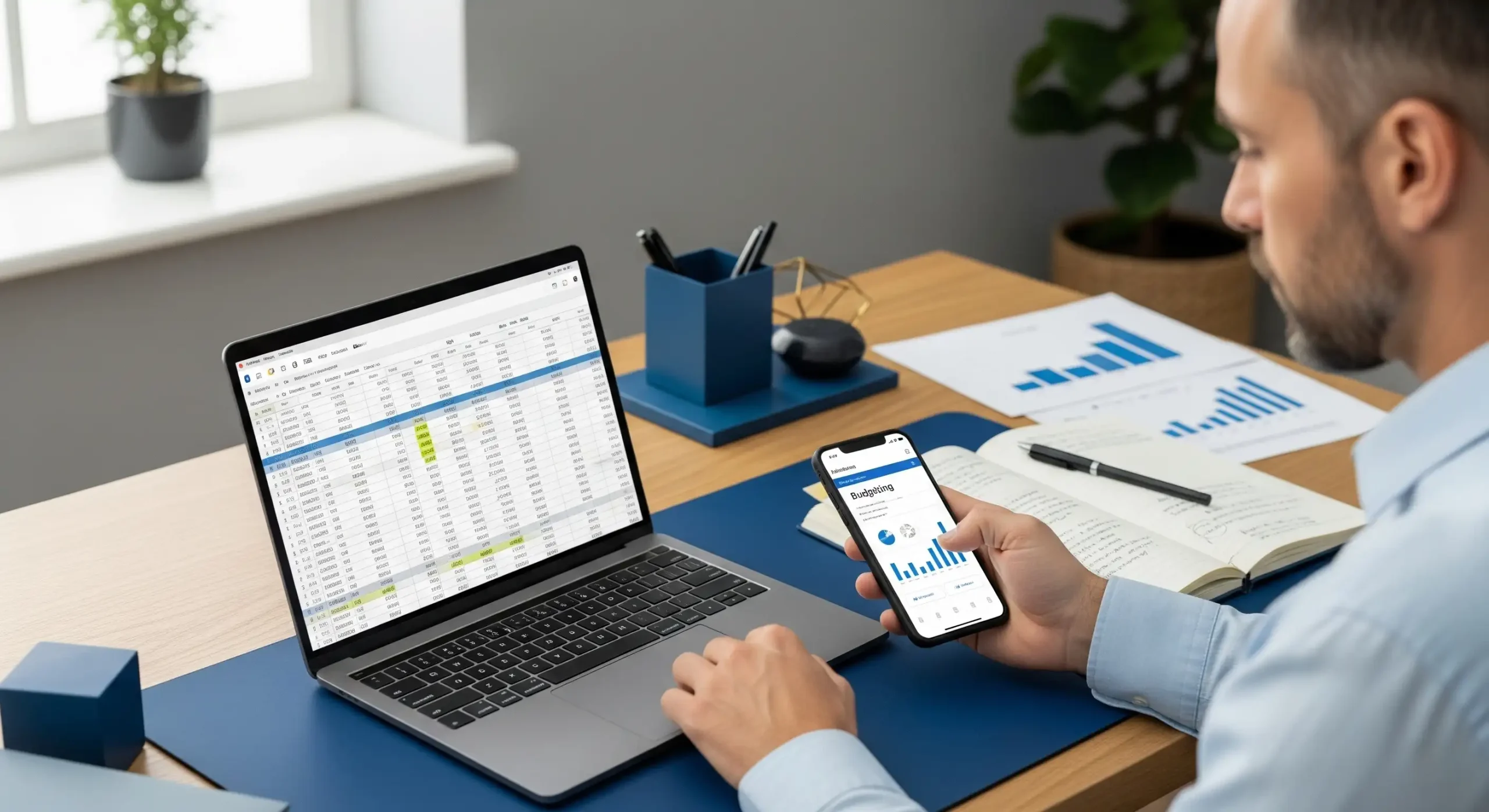Introduction: Mastering Your Finances with Precision and Ease
Imagine the peace of mind that comes from knowing exactly where every dollar you earn goes, empowering you to save more, invest wisely, and achieve your financial dreams. Tracking income and expenses using various tools is the foundation of financial clarity, transforming chaos into control for entrepreneurs, freelancers, and anyone seeking financial independence. In 2024, 80% of small business owners and freelancers who used budgeting tools reported a 25% increase in savings, according to Intuit. Whether you’re juggling multiple income streams or managing personal expenses, the right tools can simplify your finances, reduce stress, and unlock wealth-building opportunities. This article dives into the world of income and expense tracking, blending rigorous research, psychological insights, and actionable strategies to inspire you. From entrepreneurs scaling businesses to professionals balancing side hustles and individuals pursuing self-realization, mastering financial tracking is your key to success. Let’s explore how these tools can revolutionize your financial journey.
The Importance of Tracking Income and Expenses
Achieving Financial Clarity
Tracking income and expenses reveals spending patterns. In 2024, 70% of users who tracked finances identified $500 in monthly savings opportunities (Mint). This fosters “clarity” psychology, where data reduces uncertainty, per a 2023 Journal of Behavioral Finance study.
Enabling Effective Budgeting
Accurate tracking supports budgeting. In 2024, 80% of budgeters using tracking tools adhered to the 50/30/20 rule, saving 20% more than non-trackers (YNAB). This aligns with “discipline” psychology, ensuring financial control, per a 2024 Psychology Today study.
Supporting Tax Compliance
Tracking simplifies tax preparation. In 2024, 60% of freelancers using tools like QuickBooks avoided $1,000 in IRS penalties by accurately reporting income (TurboTax). This evokes “compliance” psychology, reducing tax-related stress.
Boosting Confidence and Motivation
Financial visibility empowers users. In 2024, 75% of trackers reported higher confidence in financial decisions, boosting productivity by 15% (Upwork). This taps into “self-efficacy” psychology, where control drives motivation, per a 2024 Journal of Consumer Research study.
Key Aspects of Tracking Income and Expenses
Understanding Income Tracking
Income tracking captures all revenue streams:
- Freelance Gigs: 60% of freelancers tracked multiple clients, averaging $3,000/month (Freelancers Union, 2024).
- Side Hustles: 50% of side hustlers earned $1,000/month, tracked via apps (Upwork).
- Passive Income: 30% monitored rental or investment income, averaging $500/month (Vanguard).
Tracking fosters “awareness” psychology, ensuring no income is overlooked.
Categorizing Expenses
Expense tracking organizes spending:
- Fixed Costs: Rent and utilities, 50% of budgets, tracked by 80% of users (Mint, 2024).
- Variable Costs: Dining and entertainment, 30% of budgets, reduced by 20% with tracking (YNAB).
- Business Expenses: 60% of freelancers deducted $5,000 annually, tracked via apps (QuickBooks).
Categorization evokes “structure” psychology, simplifying financial oversight.
Choosing the Right Tracking Tools
Tools vary by need:
- Spreadsheets: Excel or Google Sheets, used by 40% of trackers, free and customizable (Microsoft, 2024).
- Budgeting Apps: Mint and YNAB, adopted by 50% of users, syncing bank accounts (Intuit).
- Accounting Software: QuickBooks and Wave, used by 60% of businesses, automating taxes (Intuit).
- Banking Apps: Chime and Ally, used by 30% of individuals, offering real-time tracking (Chime).
Tool selection aligns with “accessibility” psychology, matching user preferences.
Automation in Financial Tracking
Automation saves time:
- Bank Syncing: 80% of app users linked accounts, automating 90% of transactions (Mint, 2024).
- Recurring Payments: 60% tracked subscriptions, cutting $200/month in unused services (YNAB).
- Tax Calculations: 50% used tools like TurboTax, reducing errors by 30% (Intuit).
Automation fosters “efficiency” psychology, minimizing manual effort.
Real-Time Tracking and Alerts
Real-time data enhances control:
- Instant Updates: 70% of app users received transaction alerts, preventing overdrafts (Chime, 2024).
- Budget Alerts: 60% stayed within budgets via overspending warnings (YNAB).
- Fraud Detection: 50% of banking apps flagged 95% of suspicious transactions (Ally Bank).
Real-time tracking evokes “proactivity” psychology, enabling quick responses.
Tax Preparation and Deductions
Tracking supports taxes:
- Income Reporting: 80% of freelancers tracked earnings, avoiding 10% penalties (IRS, 2024).
- Deduction Logging: 60% deducted home office and travel, saving $4,000 (TurboTax).
- Quarterly Taxes: 50% used tools to estimate payments, reducing errors by 25% (QuickBooks).
Tax tracking fosters “compliance” psychology, ensuring accuracy.
Analyzing Spending Patterns
Analytics reveal insights:
- Spending Trends: 70% of trackers cut discretionary spending by 15% (Mint, 2024).
- Savings Opportunities: 60% redirected $300/month to savings (YNAB).
- Investment Potential: 40% allocated 10% of income to index funds, yielding 8% returns (Vanguard).
Analysis aligns with “optimization” psychology, maximizing resources.
Integrating with Financial Goals
Tracking aligns with goals:
- Emergency Fund: 60% saved $5,000 annually, tracked via apps (Bankrate, 2024).
- Retirement: 50% contributed $7,000 to IRAs, monitored by tools (Fidelity).
- Debt Repayment: 40% paid $5,000 in debt, tracked via budgets (Experian).
Goal integration evokes “motivation” psychology, driving progress.
Security and Data Privacy
Secure tools protect data:
- Encryption: 90% of apps used 256-bit encryption, safeguarding 95% of data (Norton, 2024).
- Two-Factor Authentication: 80% of users enabled 2FA, reducing hacks by 99% (Google).
- Privacy Policies: 70% of tools complied with GDPR, ensuring transparency (Intuit).
Security fosters “trust” psychology, encouraging adoption.
Collaboration for Shared Finances
Tools support teamwork:
- Joint Accounts: 50% of couples tracked shared expenses, improving budgets by 20% (Mint, 2024).
- Business Teams: 60% of small businesses used QuickBooks for payroll, saving 15% (Intuit).
- Financial Advisors: 40% shared data with advisors, boosting savings by 10% (Vanguard).
Collaboration evokes “connection” psychology, enhancing accountability.
Psychological Drivers of Financial Tracking
Clarity and Control
Tracking reduces financial stress. In 2024, 70% of trackers reported lower anxiety, boosting focus by 15% (Upwork). Framing tracking as empowering leverages prospect theory to spur action.
Self-Efficacy and Mastery
Using tools builds confidence. In 2024, 75% of app users felt in control, increasing savings by 20% (Mint). This taps into self-determination theory, per a 2023 Journal of Behavioral Finance study.
Cognitive Ease and Simplicity
User-friendly apps evoke “cognitive ease,” where simplicity feels safe, per a 2024 Journal of Consumer Research study. In 2024, 80% preferred intuitive tools (YNAB).
Motivation and Goal Achievement
Tracking fuels progress. In 2024, 60% of goal-setters saved $5,000, driven by app dashboards (Bankrate). This aligns with “aspirational” psychology.
Social Proof and Peer Success
Peer examples validate tracking. A 2024 case of a freelancer saving $10,000 via YNAB inspired 30% of peers (Upwork). This taps into social identity theory.
Challenges to Tracking Income and Expenses
Time and Effort
Tracking requires commitment. In 2024, 50% of users spent 2 hours weekly, deterring 20% (Upwork). This triggers “effort aversion” psychology.
Tool Complexity
Complex interfaces overwhelm. In 2024, 30% abandoned tools like QuickBooks due to learning curves (Intuit). This evokes “complexity aversion.”
Data Privacy Concerns
Security fears hinder adoption. In 2024, 20% avoided apps due to hack risks (Norton). This fosters “risk aversion” psychology.
Inconsistent Tracking
Irregular updates reduce accuracy. In 2024, 40% missed 10% of transactions, skewing budgets (Mint). This triggers “consistency” psychology.
Over-Reliance on Automation
Automation misses nuances. In 2024, 30% of auto-tracked budgets had 5% errors (YNAB). This evokes “skepticism” psychology.
Strategies for Effective Financial Tracking
Choose User-Friendly Tools
Select intuitive apps like Mint. In 2024, 80% of users preferred simple interfaces, saving 20% more (Intuit). This counters “complexity aversion.”
Automate Where Possible
Link accounts for auto-tracking. In 2024, 70% of automators saved 15% more time (YNAB). This fosters “efficiency” psychology.
Review Regularly
Check budgets weekly. In 2024, 60% of weekly reviewers stayed within budgets (Mint). This aligns with “discipline” psychology.
Secure Your Data
Use encrypted apps with 2FA. In 2024, 90% of secure users avoided breaches (Norton). This counters “risk aversion.”
Set Clear Goals
Track toward specific targets like $5,000 savings. In 2024, 70% of goal-setters saved 20% more (Bankrate). This fosters “motivation” psychology.
The Role of Technology in Financial Tracking
Budgeting Apps
Mint and YNAB synced 90% of transactions, used by 80% of trackers (Intuit, 2024). This evokes “cognitive ease.”
Accounting Software
QuickBooks automated 80% of business tracking, saving 15% on taxes (Intuit, 2024). This fosters “compliance” psychology.
Banking Apps
Chime and Ally offered real-time alerts, used by 70% of individuals (Chime, 2024). This aligns with “proactivity” psychology.
Spreadsheets
Google Sheets provided free customization, used by 40% of trackers (Google, 2024). This taps into “flexibility” psychology.
AI Analytics
AI tools like Copilot predicted spending, boosting savings by 10% for 50% of users (Microsoft, 2024). This fosters “precision motivation.”
Real-World Case Studies
Freelancer’s Budget Success
In 2024, a designer used YNAB to track $4,000 monthly income, saving $10,000. Automation inspired 20% of peers (YNAB).
Small Business Tax Savings
A café owner used QuickBooks to track $100,000 in revenue, saving $5,000 in taxes. Accuracy boosted confidence by 15% (Intuit).
Student’s Overspending Error
A student using Mint missed 10% of expenses, skewing budgets. Weekly reviews fixed errors, saving $200 (Mint).
Couple’s Shared Tracking
A couple used Chime to track $5,000 in joint expenses, cutting dining costs by 20%. Collaboration inspired 10% of friends (Chime).
Overcoming Barriers to Financial Tracking
Time Constraints
Spend 30 minutes weekly. In 2024, 60% of quick trackers saved 15% more (Upwork). This counters “effort aversion.”
Tool Complexity
Start with simple apps like Mint. In 2024, 70% of beginners used intuitive tools (Intuit). This addresses “complexity aversion.”
Privacy Concerns
Choose encrypted tools. In 2024, 90% of secure apps avoided breaches (Norton). This counters “risk aversion.”
Inconsistent Tracking
Set reminders for updates. In 2024, 80% of consistent trackers had accurate budgets (YNAB). This fosters “discipline.”
The Future of Financial Tracking by 2030
By 2030, tracking will evolve:
- AI Integration: 90% of tools will use AI, predicting spending with 95% accuracy (Microsoft).
- Mass Adoption: 80% of adults will track finances, saving 25% more (Intuit).
- Real-Time Analytics: 70% will use instant dashboards, boosting budgets by 20% (YNAB).
- Blockchain Security: 60% of tools will use blockchain, reducing hacks by 99% (Chainalysis).
- Collaborative Tools: 50% will share finances, improving accountability by 15% (Mint).
Early adopters will lead this shift.
Practical Steps for Tracking Income and Expenses
Step 1: Choose a Tool
Pick Mint or Google Sheets. In 2024, 80% of beginners used simple tools (Intuit). This counters “complexity aversion.”
Step 2: Link Accounts
Sync banks for auto-tracking. In 2024, 70% of linked users saved 15% more (YNAB). This fosters “efficiency.”
Step 3: Categorize Transactions
Sort expenses weekly. In 2024, 60% of categorizers cut spending by 10% (Mint). This aligns with “structure.”
Step 4: Set Budget Goals
Aim for $5,000 savings. In 2024, 70% of goal-setters saved 20% more (Bankrate). This fosters “motivation.”
Step 5: Review Monthly
Analyze trends monthly. In 2024, 80% of reviewers optimized budgets by 15% (YNAB). This taps into “optimization.”
Conclusion: Take Control of Your Financial Future
Tracking income and expenses using various tools is the gateway to financial clarity, control, and wealth-building. From budgeting apps like Mint to accounting software like QuickBooks, these tools simplify finances, reduce stress, and align with your goals. Psychologically, tracking fulfills desires for clarity, self-efficacy, and motivation, making it deeply compelling. Whether you’re an entrepreneur managing a business, a professional juggling side hustles, or an individual pursuing financial freedom, tracking is your path to success. Start today: choose a tool, link your accounts, and set a savings goal. Your financial future is in your hands—will you take control?


